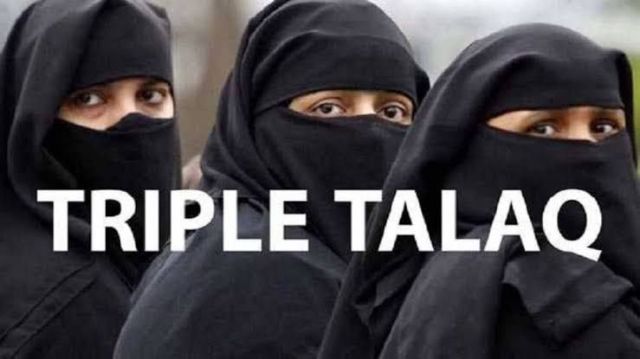Author: Arjun Singh, Invertis University, Bareilly
To the Point
The 2017 judgement of Shayara Bano v. Union of India confirmed the legal death of one of India’s most fiercely contested religious practices- Talaq-e-Biddat, or instant triple talaq. This article offers a legal autopsy as an analytical lens to explore the case- not just as a legal event but as the constitutional “death” of a egregious and gender-biased practice. In viewing the judgement as a legal autopsy, we will pick apart the judicial articulations and reasoning, constitutional doctrines invoked, and the socio-legal consequences that followed.
Abstract
In Shayara Bano v. Union of India (2017), the Supreme Court identified the instant triple talaq as an unconstitutional practice because it was arbitrary and discriminatory. This judgement marked an important landmark in India’s progress towards gender justice and secular constitutionalism. Through a ‘legal autopsy’ frame, this article examines the legal anatomy of triple talaq—its historical inception, its constitutional invalidation. The article tracks the lineage of judicial reasoning, essential religious practices test, clash between personal law and fundamental rights, and what the case means for future personal law reform in India.
Use of Legal Jargon
The judgement examined fundamental constitutional doctrines, including
– Manifest Arbitrariness as per Article 14
– The Essential Religious Practices Test under Article 25
– Judicial Review of Personal Laws under Part III of the Constitution
– The intersection of gender justice, religious freedom, and constitutional morality.
Justice Nariman’s majority opinion was largely based on the doctrine of manifest arbitrariness, which stated that any law or practice that was arbitrary, not rationally justified and unfair to is violative of Article 14. Justice Joseph remarked that a practice that is “sinful in theology” cannot be “valid in law”, which reflects a significant proximity of constitutional ethics with reform of religious practices.
The Proof
The autopsy starts with decomposing the pathology of Talaq-e-Biddat:
• Nature: A Muslim man could divorce his wife instantly by saying “talaq” three times all at once.
• Problem: Random, unilateral, and non-appealable, and extremely gender-discriminatory.
•Legal Pre-2017 Status: Recognized under Muslim Personal Law normal under statutory law, immune from constitutional scrutiny due to the personal law exception. Then the 3:2 majority judgment:
• Justice Nariman & Justice Lalit: Held it unconstitutional under Article 14.
• Justice Joseph: Agreed, as there was no religious essentiality.
• Justice Khehar (CJI) & Justice Nazeer (Dissent): Argued it forms part of religious freedom under Article 25 and thus ultimately parliament must decide.
Case Laws Referenced
Shayara Bano v. Union of India (2017)
The Supreme Court declared that instant triple talaq is unconstitutional, arbitrary and violates the equality and dignity rights of Muslim women.
State of Bombay v. Narasu Appa Mali (1951)
The Court held that, while personal and customary laws cannot violate Fundamental Rights, the absence of relevant rules must acknowledge that they do pose restrictions. Additionally, this case was not expressly overturned, but the inherent drawbacks of this case were raised throughout the arguments during the triple talaq debate.
Indian Young Lawyers Association v. State of Kerala (2018)
This is commonly referred to as the Sabarimala case, in which the Court furthered the reasoning in Shayara Bano by holding that religious practices that violate constitutional rights may be subject to challenge.
Conclusion
The “death” of Triple Talaq in Shayara Bano was not a purely judicial matter — it was ethical, feminist, and constitutional. The decision indicated the beginning of a new phase in Indian constitutionalism, which positioned the supremacy of personal laws, within the values of the constitution. It recontextualized religious reform, and placed the constitution as the primary conduit for social justice. The case was not simply a dismantling of a practice, it revitalized the gender rights of Muslim women in India, rights that we had been neglecting for too long.
FAQS
1. What is Triple talaq or talaq-e-biddat?
Triple talaq, or talaq-e-biddat, is the practice, whereby a Muslim man is able to divorce his wife instantly by saying “talaq” three times in one sitting without any legal grounds for doing so.
2. Why was triple talaq challenged?
Triple talaq was challenged on the grounds of being arbitrary, discriminatory against women, and in violation of women’s fundamental rights as expressed in Articles 14, 15, and 21 of the Constitution.
3. What did the Supreme Court hold?
In a 3:2 majority the Court held that triple talaq was unconstitutional and void under the test of manifest arbitrariness, and also failed the essential religious practices test.
4. Did the judgment find that it applied to all personal laws?
No, the cases related only to talaq-e-biddat among Sunni Muslims, but it has a wider impact on the review of discriminatory personal laws.
5. What happened after this judgment was issued?
Parliament subsequently passed the Muslim Women (Protection of Rights on Marriage) Act, 2019 that criminalizes the practice of instant triple talaq.



